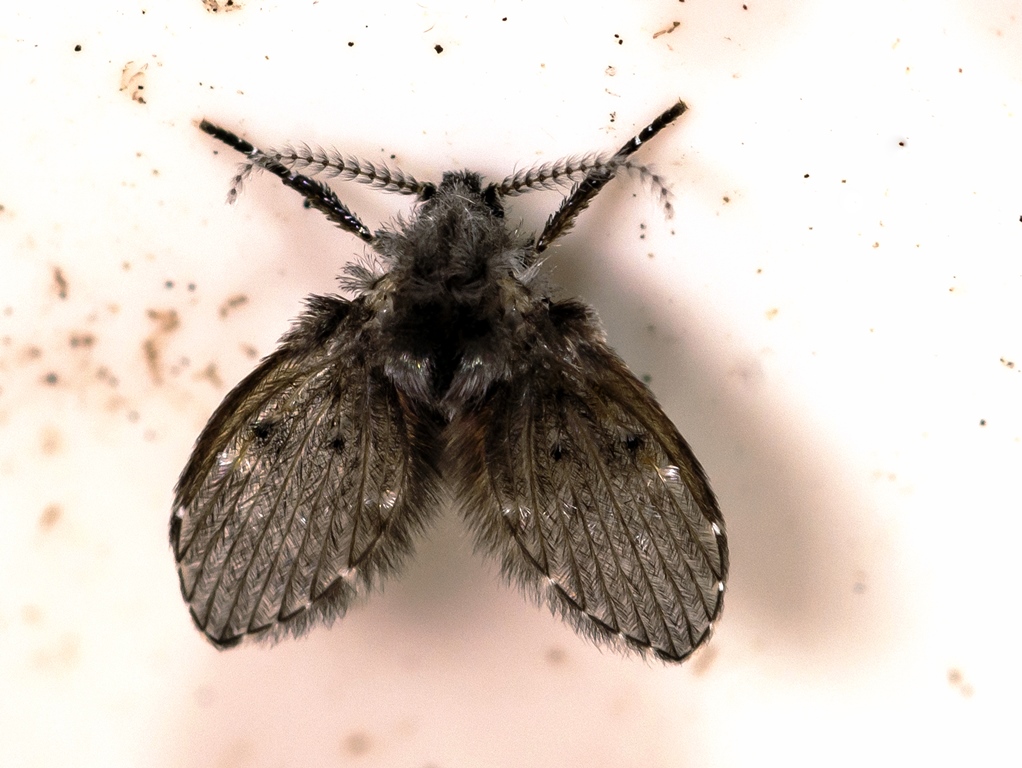Drain flies
(Psychodidae)

Biology:
Drain flies, also known as moth flies, sink flies, filter flies or sewer gnats, are 1.5 to 5 mm long on average. The body and wings are characterised by a thick coat of hair. The flies are usually dark in colour and have a more or less heart-shaped body, which is reminiscent of a tiny butterfly or moth when they are in their resting position. Drain flies are not good flyers. You can often find them on walls within close proximity of drain outlets in damp rooms like toilets. They generally lay their eggs and the larvae develop in damp places which have been heavily contaminated with organic material (e.g. toilets, drain pipes, manure, compost). The gelatinous biofilm of contaminants in siphons for washbasins or drain pipes which are not flushed regularly therefore provides an ideal source of nutrition.
Damage:
These creatures are generally seen as a nuisance and do not normally pose any problems. Only mass reproduction can lead to hygiene problems under certain circumstances, particularly if the creatures are found in rooms where food is made or stored. If the creatures appear en masse, this is often an indicator of hidden damp or concealed leaks in the sewage system.
